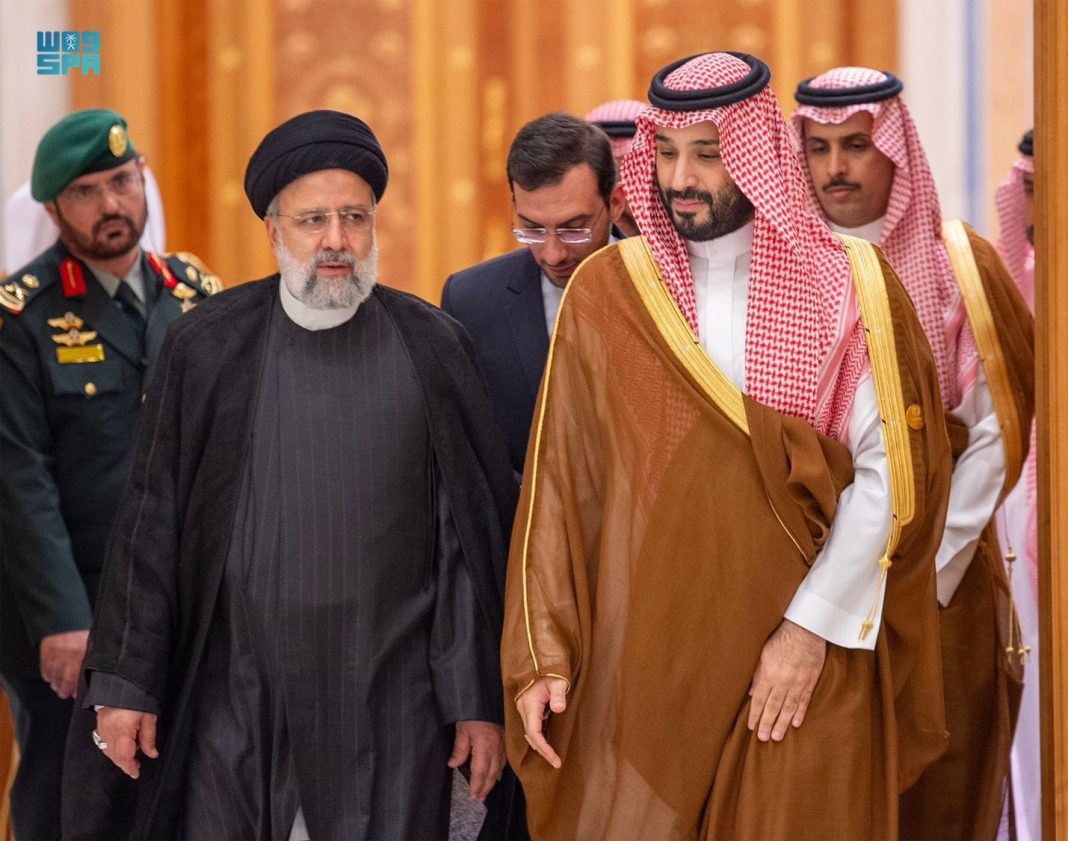High-ranking officials in Riyadh have been instrumental in relaying messages between the countries and reducing tensions over Israel’s war on Gaza.
The process began in November, when Iranian Foreign Minister Hossein Amirabdollahian attended an emergency summit in Riyadh on the Gaza war attended by leaders from the Organisation of Islamic Cooperation and Arab League countries.
An Iranian insider familiar with the matter told MEE that Amirabdollahian carried with him a message for the US to give to Saudi officials. It was a response to one recently received from Washington.
The Saudis then conveyed this message to senior officials in Washington, the source added.
Another source in Iran’s foreign ministry told MEE that Saudi Arabia has been used as a conduit between the two sides alongside Oman, Qatar and Switzerland, which occasionally represents the US diplomatically in Tehran.
The four countries have had to work as go-betweens repeatedly since the 7 October Hamas-led attack on Israel and the war on Gaza.
Iran is the Palestinian group’s strongest backer, and other Iranian-associated groups such as Hezbollah in Lebanon and the Houthi movement in Yemen have attacked Israel and Israeli- and US-linked targets as Israel’s assault on Gaza has escalated.
According to the foreign ministry source, the communications passed between Iran and the US have primarily focused on curbing tensions and avoiding greater escalation in the region.
The source stated Tehran had warned the US about the potential consequences if Israel’s war on Gaza, which has already killed 25,000 people, brings regional tensions to an uncontrollable level.
These included Israel being defeated in a broader regional war and increased security pressure on the US military.
The first source said Saudi Arabia has been used as a conduit when tensions have ramped up following Israel’s assassination of senior commanders from the “Axis of Resistance”, the Iran-backed group of countries and armed groups in the region.
After Israel killed Seyyed Razi Mousavi, the Iranian military advisor in Syria, on 25 December, a Saudi delegation visited Tehran with a message from Washington that said the US wanted to contain the conflict in Gaza.
According to the first source, the US suggested potential concessions from Israel. One was that the US would not give backing or support to hard-right Israeli officials, which dominate Israeli Prime Minister Benjamin Netanyahu’s government.
This, the source added, would be contingent on Iran not trying to derail efforts to establish full ties between Israel and Saudi Arabia, a process that was interrupted by the outbreak of the Gaza war.
On 8 January, Hossein Akbari, the Iranian ambassador to Syria, said that Iran had received a message from “one of the Persian Gulf countries”.
According to Akbari, this country sent a delegation to Iran with a message from the Americans, offering a plan to resolve conflicts for the entire region, rather than solely addressing the Gaza war. MEE understands this Persian Gulf country was Saudi Arabia.
Another Iranian insider told MEE that Washington used Saudi channels to inform Tehran that it was about to strike Yemen’s Houthis, who have been staging attacks on commercial ships in the Red Sea to disrupt Israeli supplies and commerce.
The message urged Iran to restrain its allied groups during the US strike. It also indicated that the strikes on the Houthis would not initially be too strong, but if Tehran reacted forcefully then a fierce US response would follow.
US and UK forces carried out a first round of air strikes on the Yemeni group on 12 January.
That day, during a tour of a coffee shop in Allentown, Pennsylvania, US President Joe Biden said: “I’ve already delivered the message to Iran. They know not to do anything. We will make sure we respond to the Houthis if they continue this outrageous behaviour along with our allies.”
This ongoing communication between Washington and Tehran betrays a desire by both sides to reduce tensions and avoid a larger regional war, a former Iranian diplomat told MEE.
However, the unofficial understanding between Iran and the US to keep things under control is being tested by increased attacks by Iranian-backed Iraqi armed groups on US targets, the former diplomat acknowledged.
Last year, Iran and the US struck a deal that significantly eased tensions.
The United States gave Iran some sanctions relief on oil sales, and in return Tehran agreed to curb attacks by its allies on US targets and decrease uranium enrichment. Iran released five prisoners with US citizenship in return for five Iranians in American prisons being given clemency and $6bn of Iranian assets being unfrozen.
The former diplomat warned that unless a new agreement or understanding is reached between Iran and the US, a possible nuclear crisis could break out alongside the Gaza war or in its aftermath.
Saudi Arabia’s involvement as an interlocutor is significant. In March, Tehran and Riyadh agreed to resume full diplomatic ties and reopen embassies.
The diplomatic breakthrough was brokered by China after seven years of extreme hostility, prompted by the 2016 Saudi execution of Shia Muslim cleric Nimr al-Nimr.
In response to his death, Iranian protesters stormed the Saudi embassy in Tehran, with Riyadh subsequently severing ties that were already strained by a number of disagreements over issues in the region, such as the Syrian war.
